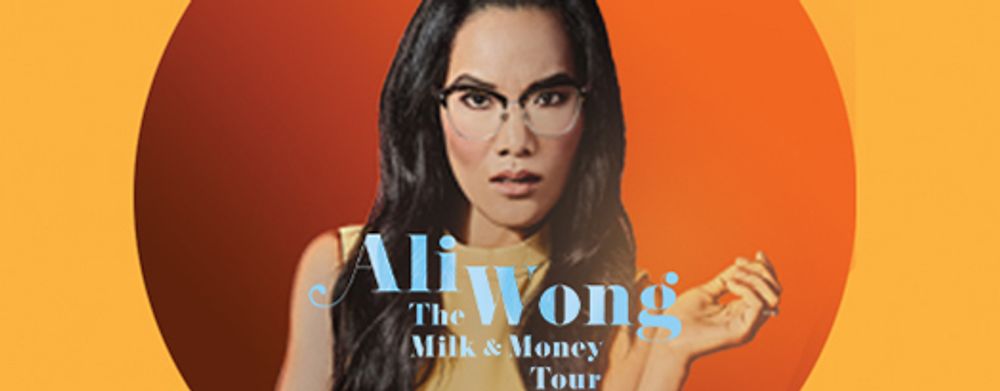Blog
Emil Guillermo: Revealing Asian America--Ali Wong lifts her dress

For Christmas, I saw Ali Wong’s panties.
I was in the balcony.
But she showed them to me–along with more than 3,000 other ticket holders at one of the 18 sold-out shows in her native San Francisco for the holidays.
Do the math. At an average of $50 a ticket, Ali Wong is making bank, as they say. And this is just the San Francisco portion of Wong’s “Milk and Money” tour.
These days, Wong is something of an Asian American entertainment juggernaut. In fact, along with performers like Awkwafina (who has a new Comedy Central show about Asian American life in Queens), Wong is leading the charge in the emergence of the modern Asian American story.
We’re here. We’re not quiet. Especially Asian American women.
More than a ribald, potty-mouth gal, Wong is the modern educated Asian American woman who speaks her mind, does her thing, and is being rewarded handsomely to boot. As Wong loves to point out, she is making more money than her husband and doesn’t need a man to be who she is.
If you’ve seen her comedy act or her Netflix specials, then you know Wong’s style and voice.
Example: After ten years of marriage, she laments how she is tempted by infidelity. But it’s less about her uncontrollable sexuality, more about her emergence as a powerful, rich, famous Asian American woman, emphasis on power.
I’ve seen Wong perform over the years in clubs in California and have watched her develop. She’s definitely not demure, though she has a PG side, as a writer on another Asian American breakthrough of the decade, “Fresh Off the Boat,” which filmed its final episode this month (to air in February 2020).
From “Fresh Off…” to “Crazy Rich Asians,” to Wong’s own Netflix movie, “Always Be My Maybe,” to Awkwafina, Ken Jeong, and Jo Koy, entertainers are helping others become more aware of “us” than ever before.

And these performers aren’t talking about civil rights history. In my one-man show, I talk about my dad from the 1920s. Old school. This generation of Asian Americans is more focused on the present.
They’re standing up, telling our current stories, and letting other people know we’re here too.
If I’m amok, they’re Amok 2.0.
The monetary success of Wong, and last summer’s “Crazy Rich Asians,” has let Hollywood know what Chinese restaurant owners have known forever. There’s a market out there for us.
The audience is underserved and wants to see it all. At the very least, they want to hold up the media mirror and see themselves.
But as I stood in line waiting to get into Wong’s show, I didn’t just see Asian Americans who hunger for this. It was a mixed crowd of diverse comedy fans. Young ones who assume their presence. And a few older ones, who have endured the struggle. Audience members were white, black, Latino.
Asian America has universal appeal.
But compare now to ten, twenty, thirty years ago.
Think of all the barriers that had to be overcome.
Think of the shoulders on which we stand upon.
Asian faces in the media have been with us throughout as journalists and actors and comedians, but as our community evolves, grows, and explodes (more than 21 million), a new generation is surging forward in a big way.
So Wong’s opening act, Sheng Wang–Wong’s writing cohort from “Fresh Off the Boat,” and a comedian from LA via Houston and New York’s Chinatown—talks about Asians like we’re just ordinary people, with jokes about buying lotion from Costco and liking Almond Joy over Mounds bars. And Wong goes further, talking about her colonoscopy. It’s all expression that normalizes Asian Americans for laughs and for the good.
AND YET….
For every step forward, there are still transgressions that spoil the fun.
In San Francisco last week, I saw a tweet from an Asian American who told his story about getting accosted by a driver who yelled at him, “Dumbass Chink.”
From the personal to the professional, it never ends.
Two Asian American professors, Scott Kurashige, a one-time tenured professor at the University of Michigan, and his wife, Emily Lawsin, a Filipino American lecturer in women’s studies for nearly twenty years, sued the university for violations of the Michigan Civil Rights Act in 2017.
At their trial last week, they lost.
On Facebook, Kurashige wrote:
Emily P. Lawsin and I filed a civil rights lawsuit against the University of Michigan three years ago. Since then we’ve revealed smoking gun evidence exposing the systemic machinations behind the firing, failed retention, and denial of hire of activist faculty of color. We’ve exposed how the complaints of PhD students of color being harassed and stigmatized by white faculty were met with cover up and retaliation. And how critical thinking and the education of students were sacrificed to continue the cover up. We couldn’t convince a nearly all-white jury this violated the law. But the truth is out there, so we’ll live to fight another day. Love and gratitude to all who have stood with us through trying times.
It’s yet another Asian American story whose roots trace back to our historical treatment.
Amid the mirth of Wong and others, there’s still a big part of America that says “Asian American what?”
The laughter unites us, makes us feel good, and tells us we’re not alone. It should make us stronger. Because when the laughs fade, we’re reminded there’s still much work to do.
Next week, I’ll look at the year and the decade past and ponder 25 years of my amok columns.

Emil Guillermo is an independent journalist/commentator. Updates at www.amok.com. Follow Emil on Twitter, and like his Facebook page.
The views expressed in his blog do not necessarily represent AALDEF’s views or policies.
Read Emil's full bio →